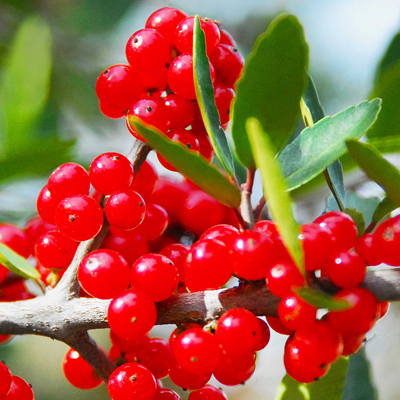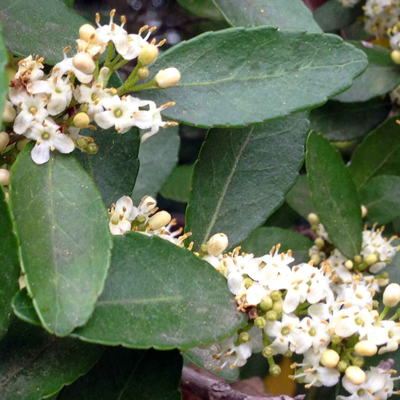Will my holly have berries?

Class, our word for the day is dioescious. It’s from the Greek, “di” for “two” and “oikos” for “houses.” “Two houses.”
With me so far?
Simpler terms: A dioescious plant has its male and female reproductive flower parts on two separate plants.
Yaupons, possumhaws and many other hollies are dioescious. That means you’d want a female plant if you wanted berries, but you’d need a male plant somewhere within bee range if you wanted pollen to be transported to your mama-to-be.

So, how can you tell the boys from the girls?
This is just simple botany as it applies to horticulture.
• Male holly flowers have several anthers protruding out from the petals. Each will be coated in pollen. As bees move into the flowers to capture the nectar, they will pick up the pollen from many flowers and carry it with them as they search for the female flowers.
• Female holly flowers will have a pistil (looks like a bowling pin) sitting in the center of each tiny flower. Its function: collect pollen on its sticky surface (stigma).
Ways to be sure your holly (any type) will have fruit…
• Obviously, buy one that has fruit when you buy it.
• Buy a named cultivar that has been selected because it produces quantities of lovely berries. If it carries a label, and if it is a female selection, it will have been propagated from cuttings to ensure that it’s true to name.
• Know your nursery professional and ask him or her for their word on the gender of the plant that you’re buying.
• Buy it while it’s in bloom and see if it has male or female flowers.

Perhaps it’s easier to see on a squash flower…
Squash and other cucurbits also produce separate male and female flowers, but they do so on the same plant. Here you can see a gardener who is short on bee activity in his garden transferring pollen from the male flower (petals removed) to the female flower’s sticky stigma. This is a good way to increase crop yield for squash, cucumbers and melons.
